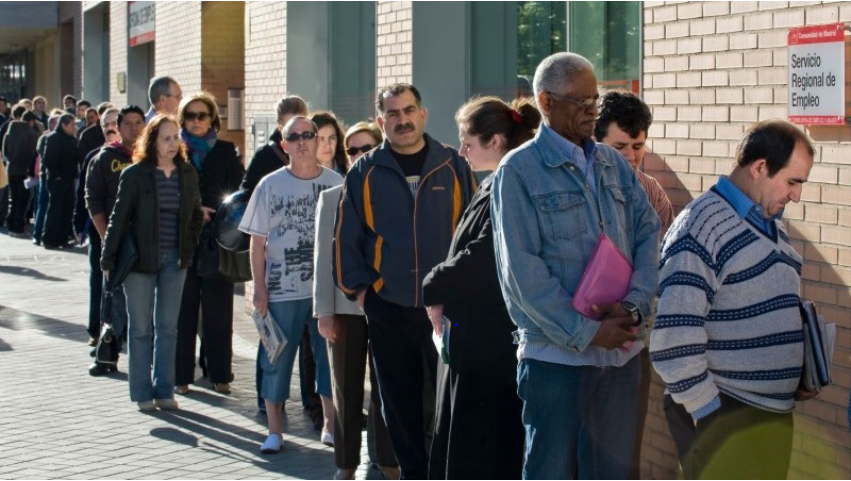Den europæiske arbejdsløshed er kunstigt lav – en af de laveste i industrilandene, skriver ING, og det skyldes støtteordningerne. Når de udløber, venter ING en kraftig stigning – i efteråret og til næste år, selv om ledigheden næppe vil nå niveauet under finanskrisen. Mens den europæiske arbejdsløshed er steget til 7,7 pct., er den amerikanske steget til 14,7 pct. Korttidsarbejde har bidraget til den lave ledighed. Uden dette ville ledigheden være på ca. 11 pct. i Europa.
The eurozone’s labour market Cinderella story
Unemployment in the eurozone is currently artificially low and will continue to run up for quite some time, as short-time work schemes come to an end, more people look for work and structural changes hit the labour market.
At face value, eurozone unemployment almost looks like a Cinderella story. With barely any increase in unemployment, it is currently the belle of the global labour market ball, at least compared to many other developed economies. When the clock strikes midnight, however, and short-time work schemes come to an end, the fairy tale is unlikely to continue.
We expect a second wave of job losses towards the end of the year and going into 2021 although the peak in unemployment should still remain below the highs seen in the aftermath of the financial crisis.
Short-time work is the main driver of the strong labour market numbers
This crisis is not like the others. Even economists who’ve written books about how recessions are all broadly similar admit to this. One of the ways through which this plays out is the unemployment rate. Even though the economy has seen an unprecedented shock, unemployment has only inched up so far, from 7.1% in February to 7.7% in June. This is in no way reflective of the historic decline in economic output experienced in the first and second quarters.
By contrast, in the US, the unemployment rate increased from 3.5% to 14.7% in April, after which it declined but still remained in double digits, at 10.2% in July. One of the driving factors behind the difference is the short-time work schemes that eurozone economies have implemented. This has suppressed the amount of people being laid off on a large scale.
The eurozone unemployment rate has only marginally increased, in stark contrast to US unemployment
Short-time work schemes were introduced in Germany more than 100 years ago and gained enormous popularity during the financial crisis in 2008/9. Back then, they helped the German economy to exit the crisis quickly.
Other eurozone economies also implemented similar schemes and have been motivated to do so during the current crisis. The Support to mitigate Unemployment Risks in an Emergency (SURE) programme, a newly-introduced policy tool at the European level, is the best illustration of how popular such schemes are.
However, this policy instrument works best when it is applied in sectors which quickly return to full strength so that employers do not lose time and money laying off and re-hiring employees. The Dutch short-time work scheme is a good illustration of this as it works with multiple rounds. The first round which started at the beginning of the crisis was used by just under 140,000 businesses, but the second version of the short-time work scheme which started recently has drawn significantly less demand than the first, at just 36,000 businesses so far, as better economic prospects reduced the need to apply again.
While short-term work schemes are an effective tool to smooth unemployment for cyclical purposes, the tool will be less effective in sectors which are undergoing structural change, posing a risk for unemployment in the recovery phase.
Another factor contributing to the artificially low unemployment rate is the decline in people looking for work. People who have not been actively looking for jobs are not officially counted as unemployed. This is especially the case in Italy and Spain, where the increase in the number of unemployed has been accompanied by an unusual drop in the active population.
Without short-time work, unemployment could have risen to around 11%
All large eurozone economies have put short-time work schemes in place for companies to bridge the economic fallout caused by the lockdowns. In Germany, around 15% of workers are on short-time schemes, compared to just above 30% in Italy. This means that government is supporting employment on a massive scale at the moment. To simply add those numbers to the amount of unemployed would overstate the current “actual” unemployment situation, so it still does not tell us much about the state of the eurozone labour market in this unusual crisis.
For the months ahead, the hypothetical unemployment rate would increase to around 11% based on our base case for GDP growth which does not include a second lockdown. This is still lower than the peak of 12.1% reached in 2013 during the euro crisis.

